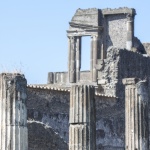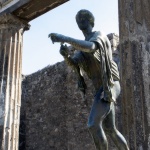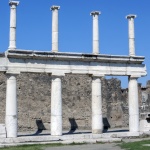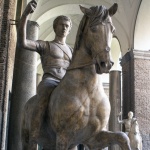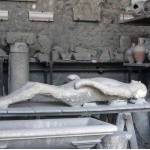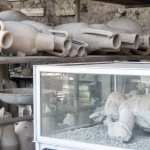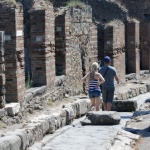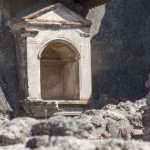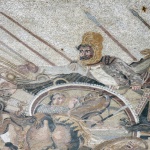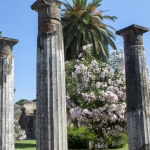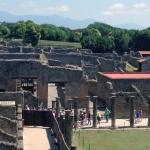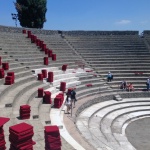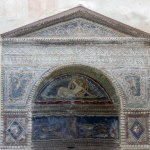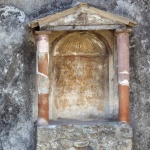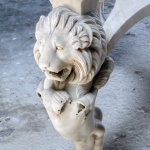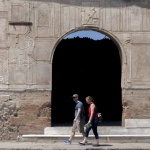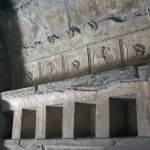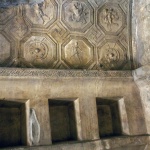|
INTRODUCTION TO GALLERY
Press Esc to close
INTRODUCTION TO CAMPANIA, ITALY GALLERY Naples is the capital of the Southern Italian region of Campania famous for well the remarkably well-preserved ancient Roman towns of Pompeii and Herculaneum, and the scenic Amalfi Coast. Naples itself an ancient city located in an area settled by Greek in the second millennium BCE often overlooked due to its depressed economy and unartful graffiti tags that compete with its undermaintained architectural heritage. Extensively bombed during World War II, the city still possess of wealth of medieval structures including town walled gates and churches and do to the lack of tourism ever present in Italy's northern cities, exploration at times gives way to authentic cultural gems such as the old and young using their hands to talk with as much as their mouths, at tmes so passionately you might expect a fight to break out only to see the situation change rapidly to one of calm. Old and young boys walk with a swagger, or braggadocio that seems to be only an extension of their passionate speech. The poorer young women in the region we would see off the beaten track from the more touristy areas seemed like they were plucked out of the reality TV program, "Jersey Shore", when in fact it must have been the other way around though skipping a generation or two. In fact, some of the outdoor markets in Naples recall pictures of streets teaming with immigrants trying to eke out a living on New York City a century ago. Naples is known as the home of pizza and it is everywhere there but I think the artisan pizzas in San Francisco and Chicago are better. What cannot be improved upon, however, is a Caprese salad (named for the island of Capri on the Amalfi Coast) made with local, fresh mozzarella, tomatoes the flavor of which you cannot find in a typical store or restaurant in America, fresh basil and olive oil. Itís quite surprising how something so simple can taste so wonderful. Pompeii and the much smaller Herculaneum are a short train ride from Naples. The population of Pompeii was large enough to have built an ampitheatre capable of seating some 20,000 for a gladiatoral spectacle. While much of what you can see in Pompeii ruined walls, remnants of facades and art work offer some sense of the wealth of Roman antiquity and daily life. Most of the extensive mosaics, paintings and sculptures from Pompeii and Herculaneum, however, are kept in the National Archeological Museum in Naples with copies at time maintain in situ at the outdoor sites. You can clearly see Mount Vesuvius from one of the arches at the end of Pompeii's Forum, there are several bakeries recognizable by their ovens in the town as well, and in addition to a large and small outdoor theater, bordellos, homes and businesses, to be found in both locations. Herculaneum is a fraction of the size of Pompeii but no less rewarding to visit. Seeing the artistry of the objects housed in the Museum in Naples gives a necessary fuller picture to the partial-structures found in the two cities and one could only wish we could walk around in a reconstructed model with artifacts and bodies found where they were discovered. Archaeological exploration continues at both sites giving hope that new discoveries await us and that one visit may never be the same as a later one. The Amalfi coast is a touristy scenic area south of these three cities known for buildings covering hills above the Tyrrhenian Sea separating the peninsula of Italy from Sicily, Corsica and Sardinia. Amalfi is a small town dominated by its Duomo and piazza literally across the street from the beach. Ravello is further away from the sea but sits on the top of one of the mountains that line the coast and has arresting views from its walkable parameter and the beautiful Villa Cimbrone. In the opposite direction, Positano is a spectacular town jutting up from the sea on the side of a hill reach by a short, beautiful ferry ride or longer bus ride along the windy cliffs from Amalfi
|
||||||||

